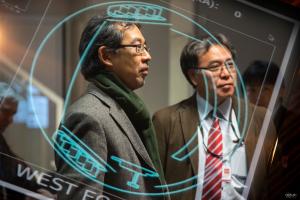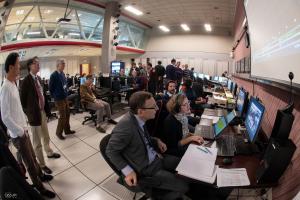WEST tokamak controlled from Japan
On a large video wall in Rokkasho, Japan, a plasma generated in the south of France flashes briefly. Operators are testing remote data acquisition and control techniques—the same techniques that will one day make it possible to carry out experiments on ITER—by demonstrating them on existing devices such as the WEST tokamak.
The Remote Experimentation Centre (REC) in Japan reproduces the control room of a fusion research facility, with functions for preparing and setting plasma shot parameters, viewing the status of control data, operation monitoring, and data exchanging.
The development of the Remote Experimentation Centre is progressing under the umbrella of the Broader Approach, an agreement between the European Union and Japan that establishes advanced R&D projects in support of ITER and the next-phase device. The centre is one of three projects at the International Fusion Energy Research Centre (IFERC) in Rokkasho.



